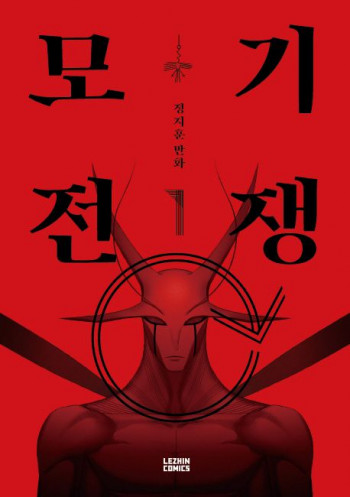Summary

A God of Death & Rest
by K.M. Moronova
Tomorrow is as ugly as it is beautiful.
I’ve suffered for six months at Violet’s hand. She’s been collecting my blood and keeping it in her dungeon. She demands to know where Lucius is, but there’s one problem: I’m not Talia and I have no idea where Lucius is.
Things are changing. She’s assigned me a new guard, and as much as we don’t get along, we’re drawn to one another. Together we're uncovering secrets that will help save the Rhythm, and hopefully our friends too.
I’ll need all of my male gods—all our wishes and hearts.
Break the bond. Find Lucius. Restore the Rhythm.
.
Read
A God of Death & Rest on http://kissnovel.net
Martial Peak Reviews
A God of Death & Rest by K.M. Moronova is a captivating addition to the realm of fantasy literature, weaving a tale that is as intricate as it is compelling. The book opens with a gripping premise: the protagonist, who is not Talia, finds herself ensnared in a web of manipulation and power struggles orchestrated by the enigmatic Violet. The narrative is set against a backdrop of dark magic and emotional turmoil, where the protagonist’s suffering at Violet's hands serves as a stark reminder of the stakes involved in their world.
The blurb hints at a duality that permeates the story—“Tomorrow is as ugly as it is beautiful.” This theme resonates throughout the novel, as Moronova expertly balances moments of despair with glimmers of hope. The protagonist’s journey is not just a physical one; it is also a profound exploration of identity and resilience. As she grapples with her captivity and the demands placed upon her, readers are invited to reflect on the nature of self-discovery amidst adversity.
Character development is one of the novel's strongest suits. The protagonist is a well-crafted character whose evolution is both believable and relatable. Initially portrayed as a victim, she gradually transforms into a figure of strength and agency. Her relationship with her new guard adds layers to her character; their initial antagonism evolves into a complex bond that is both tender and fraught with tension. This dynamic not only serves to deepen the emotional stakes but also highlights the theme of connection in the face of adversity.
Violet, the antagonist, is another standout character. Moronova paints her as a multifaceted villain whose motivations are as intriguing as they are chilling. Rather than being a one-dimensional figure, Violet embodies the complexities of power and control, making her a compelling foil to the protagonist. The tension between them is palpable, and it drives much of the narrative forward. Readers will find themselves questioning Violet's actions and the underlying reasons for her cruelty, which adds depth to the overall conflict.
The world-building in A God of Death & Rest is richly detailed, immersing readers in a universe where magic and reality intertwine. Moronova’s descriptions are vivid, allowing readers to visualize the dark dungeons and the ethereal landscapes that the characters traverse. The concept of the Rhythm, a central element of the plot, is intriguing and serves as a metaphor for balance and harmony in life. The quest to restore the Rhythm becomes a powerful symbol of the characters’ struggles and aspirations, echoing the universal desire for equilibrium in a chaotic world.
As the narrative unfolds, the themes of friendship, loyalty, and sacrifice emerge prominently. The protagonist’s determination to save her friends and uncover the truth about Lucius showcases the importance of camaraderie in overcoming challenges. Moronova deftly illustrates how relationships can be both a source of strength and vulnerability, adding emotional weight to the story. The bonds formed between characters are tested, and the stakes are raised, making for a gripping read that keeps the audience on the edge of their seats.
Moreover, the romantic subplot is skillfully woven into the fabric of the story. The chemistry between the protagonist and her guard is palpable, and their relationship evolves organically throughout the narrative. Moronova avoids the pitfalls of typical romance tropes, instead opting for a nuanced portrayal of love that is intertwined with the characters’ personal growth. This adds an additional layer of complexity to the story, making it more than just a tale of survival; it becomes a journey of emotional discovery.
The pacing of the novel is well-executed, with a balance of action and introspection that keeps readers engaged. Moronova knows when to ramp up the tension and when to allow for quieter moments of reflection, creating a rhythm that mirrors the very concept of the Rhythm itself. The plot twists are cleverly placed, ensuring that the story remains unpredictable and exciting. Just when readers think they have it all figured out, Moronova introduces new revelations that challenge their assumptions and keep them guessing.
In comparison to other works in the fantasy genre, A God of Death & Rest stands out for its emotional depth and character-driven narrative. While many fantasy novels focus heavily on world-building and epic battles, Moronova’s emphasis on personal struggles and relationships sets this book apart. Readers who enjoy the works of authors like Sarah J. Maas or Jennifer L. Armentrout will find much to love in Moronova’s storytelling style, which combines rich character development with a compelling plot.
In conclusion, K.M. Moronova’s A God of Death & Rest is a beautifully crafted tale that explores themes of identity, resilience, and the power of connection. With its well-developed characters, intricate world-building, and a plot that balances darkness with hope, this novel is sure to resonate with readers long after they turn the final page. It is a testament to the strength of the human spirit and the bonds that can be forged even in the most dire of circumstances. For those seeking a fantasy read that delves into the complexities of life and love, this book is not to be missed.
























Reviews 0
Post a Reviews: